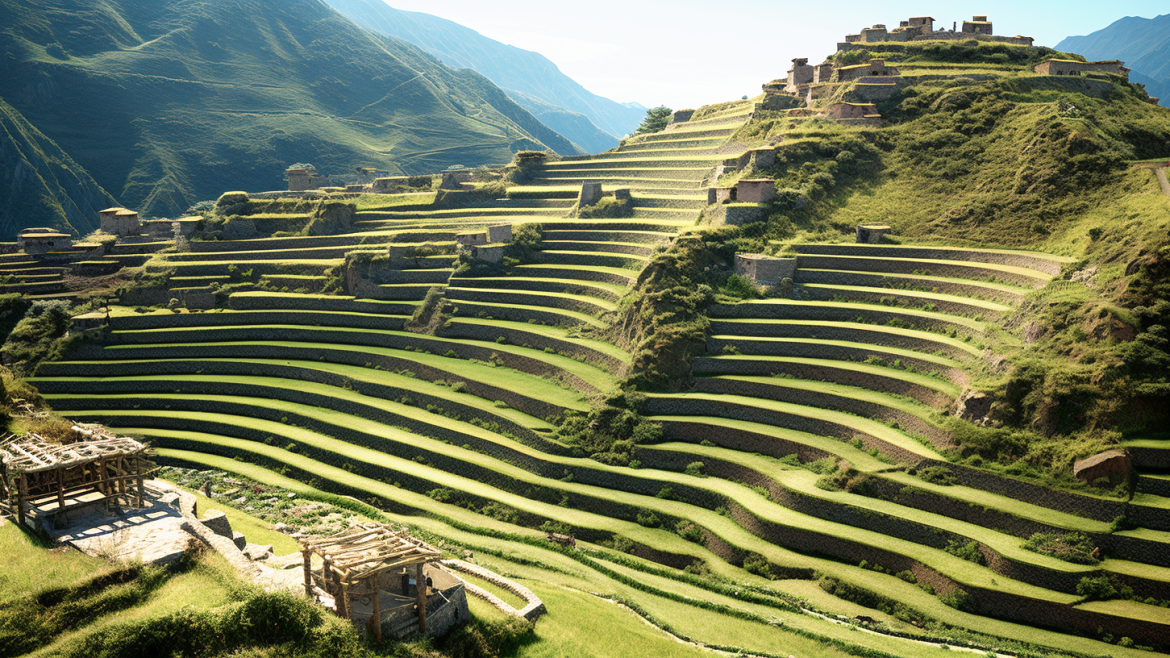The Inca civilization, which spanned across a vast region of South America from the 13th to the 16th centuries, was renowned for its agricultural prowess. Despite facing numerous challenges, including diverse climates and difficult terrains, the Incas managed to develop highly sophisticated agricultural techniques that allowed them to grow a wide range of crops. These innovative practices not only helped sustain their expansive empire but have also left a lasting impact on modern farming methods.
One of the most significant Inca agricultural innovations was the development of an extensive terracing system. This technique allowed them to transform steep, mountainous slopes into productive farmland. By constructing a series of flat terraces and retaining walls, the Incas were able to control erosion, improve water management, and create microclimates suitable for a variety of crops. This terracing system also helped to conserve soil fertility and prevent nutrient loss, allowing them to maintain high crop yields year after year.
The Incas also practiced crop rotation and intercropping, which further enhanced their agricultural productivity. They understood the importance of rotating different crops on the same piece of land to prevent soil depletion and reduce the risk of pests and diseases. Intercropping, or growing multiple crops in close proximity, promoted biodiversity and improved the overall health of their agricultural systems. These practices, which continue to be essential components of sustainable agriculture today, helped the Incas maintain a stable food supply for their growing population.
In addition to their innovative farming techniques, the Incas were skilled in the art of plant breeding and selection. They selectively bred their crops to improve their resistance to pests, diseases, and climatic stresses, resulting in the diverse range of crop varieties that we see today. Their ability to adapt their crops to a variety of conditions is a testament to their ingenuity and their deep understanding of the natural world.
Here are some specific examples of plants from the Inca civilization that could be grown in modern gardens:
- Quinoa (Chenopodium quinoa) – a nutritious pseudocereal with high protein content and a complete amino acid profile.
- Amaranth (Amaranthus spp.) – a versatile pseudocereal, cultivated for its edible seeds and leaves.
- Oca (Oxalis tuberosa) – a tuber crop with a tangy flavor and a texture similar to potatoes.
- Ulluco (Ullucus tuberosus) – another tuber crop, known for its colorful skin and unique taste.
- Mashua (Tropaeolum tuberosum) – an edible tuber with a slightly bitter taste, also grown for its vibrant flowers.
- Maca (Lepidium meyenii) – a root vegetable that is considered an adaptogen, believed to increase stamina and energy levels.
- Tarwi (Lupinus mutabilis) – a legume with high protein content, cultivated for its edible seeds.
- Pepino (Solanum muricatum) – a fruit-bearing plant related to the tomato, with a sweet, melon-like flavor.
The Inca civilization’s agricultural practices and their influence on modern farming methods serve as a reminder of the importance of sustainable agriculture and the power of human ingenuity in overcoming challenges. By studying and preserving these ancient techniques, we can continue to learn valuable lessons about how to nurture our land and cultivate diverse, nutritious crops for generations to come.




